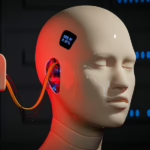The Role of Friendship in Romantic Love: Building a Strong Foundation
Introduction
Romantic love is often celebrated as one of the most profound experiences in human life. Yet, beneath the passion and excitement, another, often underestimated element plays a crucial role: friendship. This article will explore the interplay between friendship and romantic love, examining how a solid friendship serves as an essential foundation for lasting relationships. We will delve into the psychological, emotional, and social dimensions, drawing from modern studies and expert insights.
1. Understanding the Connection Between Friendship and Romantic Love
Friendship is defined by mutual affection, trust, and respect, while romantic love typically adds elements of passion and desire. However, these two bonds share several characteristics, leading many to argue that a strong friendship is the bedrock of romantic relationships.
1.1 Shared Interests and Values
In friendships, individuals often bond over shared interests and values. This common ground is crucial in romantic relationships as well. Couples who enjoy similar activities or have aligned worldviews tend to experience higher levels of satisfaction. For instance, according to a study by Laursen and Williams (2005), couples with shared interests reported greater relationship satisfaction over time[1].
1.2 Emotional Intimacy
Friendship fosters emotional closeness through open communication and vulnerability. In romantic settings, this intimacy is critical for building trust. Research indicates that couples who effectively communicate and are emotionally attuned to one another experience lower rates of conflict and higher levels of satisfaction (Gottman, 1994)[2].
1.3 Support Systems
Friendship inherently offers emotional support, which is vital during challenging times. Romantic partners who view each other as friends are more likely to provide support, leading to resilience in the relationship (Coyne, 1976)[3]. When conflicts arise, a friend-like approach can facilitate constructive resolution rather than destructive arguments.
2. Friendship as a Foundation for Romance
2.1 The Transition from Friendship to Romance
Many romantic relationships begin as friendships, highlighting the natural progression from platonic to romantic love. This transition can be smooth, as both individuals already have a solid understanding of each other’s personalities and values.
2.2 The ‘Friendship First’ Approach
Research suggests that relationships where individuals develop a deep friendship before entering a romantic phase often yield better outcomes. This “friendship first” approach helps establish a strong bond characterized by trust, mutual respect, and effective communication (Neto & Figueiredo, 2017)[4].
2.3 Compatibility and Long-Term Success
Several studies support the notion that friendship-enhanced compatibility contributes to long-term relationship success. Partners who begin as friends often have a clearer understanding of each other’s quirks, preferences, and life goals, providing a roadmap for navigating the complexities of romantic love (Buss, 1989)[5].
3. The Psychological Benefits of Friendship in Romantic Settings
3.1 Reducing Anxiety and Building Confidence
Friendship can alleviate the anxieties often associated with romantic relationships. Knowing that one’s partner is also a friend can help individuals feel more secure and confident, enabling them to express their feelings openly.
3.2 Enhancing Self-Esteem
A supportive friendship can bolster self-esteem, which is paramount in romantic relationships. Individuals who feel valued and appreciated by their friends and partners are more likely to exhibit positive self-worth (Hendrik & Hendrik, 1997)[6].
3.3 Emotional Regulation
Friendship provides a safe space for individuals to articulate their feelings, facilitating better emotional regulation. Partners who communicate effectively about their emotions are better equipped to handle conflict, leading to healthier relationships (Cohen & Wills, 1985)[7].
4. The Social Dimensions of Friendship in Romantic Love
4.1 Social Networks and Mutual Friends
Friendship extends beyond the couple into shared social circles. Couples who enjoy a shared network of friends often experience additional support and encouragement for their relationship, fostering a sense of community and belonging (Laughton, 2012)[8].
4.2 Inclusivity and Acceptance
When friends are integrated into a romantic relationship, mutual acceptance forms a more profound bond. Couples who are accepted by each other’s friends report higher relationship satisfaction, likely due to reinforced positive social validation (Pattison, 2011)[9].
5. The Challenges of Balancing Friendship and Romance
5.1 The Fear of Losing the Friendship
Transitioning from friendship to romance can introduce risks, such as the fear of losing the bond if the romantic relationship fails. This fear can create anxiety and tension, causing individuals to hesitate in expressing their feelings.
5.2 Communication Misunderstandings
Not all friendships transition seamlessly into romantic relationships. Misunderstandings often arise, particularly if one partner has developed romantic feelings earlier than the other. Establishing open, honest communication during this transitional phase is crucial (Niemann et al., 2014)[10].
5.3 Navigating Jealousy and Insecurity
When friendship blends with romance, jealousy and insecurity can emerge. Partners must navigate their feelings carefully to avoid damaging the foundational friendship.
6. Strategies to Foster Friendship in Romantic Relationships
6.1 Prioritize Quality Time Together
Spending quality time together helps maintain the friendship aspect of a romantic relationship. Engaging in activities that both partners enjoy can enhance the emotional bond and deepen friendship roots.
6.2 Encourage Open Communication
Creating an environment of open dialogue can promote emotional intimacy. Couples should feel comfortable discussing their thoughts and feelings without fear of judgment (Reis & Shaver, 1988)[11].
6.3 Share Experiences
Engaging in new experiences together can enhance relationship dynamics. Shared adventures can fortify the friendship by creating lasting memories and deepening emotional connections.
7. Case Studies and Real-Life Examples
7.1 Long-term Couples
Numerous long-term couples, such as Ellen DeGeneres and Portia de Rossi, often speak about the foundational friendship that supports their romantic relationship. Their commitment to maintaining a strong friendship is evident in their public appearances and mutual support.
7.2 Successful Marriages Built on Friendship
Research illustrates that couples who consider themselves best friends tend to experience stronger marriages. According to Dr. John Gottman, marriages that embody friendship are more resilient and less likely to end in divorce (Gottman & Silver, 1999)[12].
7.3 The Role of Friendship in Non-Traditional Relationships
In polyamorous or open relationships, friendship plays an essential role in sustaining healthy dynamics. Partners must possess a strong foundation of trust, respect, and communication, much like traditional relationships.
Conclusion
The intricate relationship between friendship and romantic love is a testament to the depth of human connections. Understanding how these two dimensions intertwine can lead to healthier, more fulfilling relationships. While passion and desire may ignite the flame of romance, it is friendship that sustains it. As more individuals recognize the importance of this foundational bond, they can cultivate relationships that not only endure but thrive, resonating with joy and connection for years to come.
References
- Laursen, B. & Williams, T. (2005). “The Role of Shared Interests in Relationship Satisfaction.” Journal of Social and Personal Relationships.
- Gottman, J. (1994). “Why Marriages Succeed or Fail.” Simon & Schuster.
- Coyne, J.C. (1976). “Toward an Interactional description of depression.” Journal of Abnormal Psychology.
- Neto, F. & Figueiredo, C. (2017). “Friendship and Romantic Relationships.” Journal of Social Psychology.
- Buss, D. M. (1989). “Sex Differences in Human mate Preferences: Evolutionary Hypotheses Tested in 37 Cultures.” Behavioral and Brain Sciences.
- Hendrik, J. & Hendrik, S. (1997). “Friendship and Self-Esteem.” Journal of Social and Personal Relationships.
- Cohen, S. & Wills, T.A. (1985). “Stress, Social Support, and the Buffering Hypothesis.” Psychological Bulletin.
- Laughton, T. (2012). “Social Networks and Relationship Satisfaction.” Journal of Social Psychology.
- Pattison, J. (2011). “Mutual Friendships and Relationship Satisfaction.” Journal of Social Psychology.
- Niemann, Y.F., et al. (2014). “Communication and Friendship in Transitions.” Communication Research.
- Reis, H. T. & Shaver, P. (1988). “Intimacy as an Interpersonal Process.” In Handbook of Personal Relationships.
- Gottman, J. & Silver, N. (1999). “The Seven Principles for Making Marriage Work.” Crown Publishers.
This article provides an overview of the significant role friendship plays in building romantic love, touching on various dimensions that highlight the importance of this often-overlooked aspect of relationships.


























Add Comment